Postal services, also called mail services, are the procedures involved in the collection, handling, and delivery of letters, messages, and packages. Post offices are places where mail is handled and postal materials and services are sold. The terms postal service and post office can also refer to a government agency that provides mail services. In the United States, the government agency that provides mail services is called the United States Postal Service. In the United Kingdom, it is called the Post Office. India Post provides similar services in India, as does An Post in Ireland. In Australia, the postal service is the Australian Postal Corporation, which operates under the name Australia Post; in Canada, it is the Canada Post Corporation, or Canada Post.
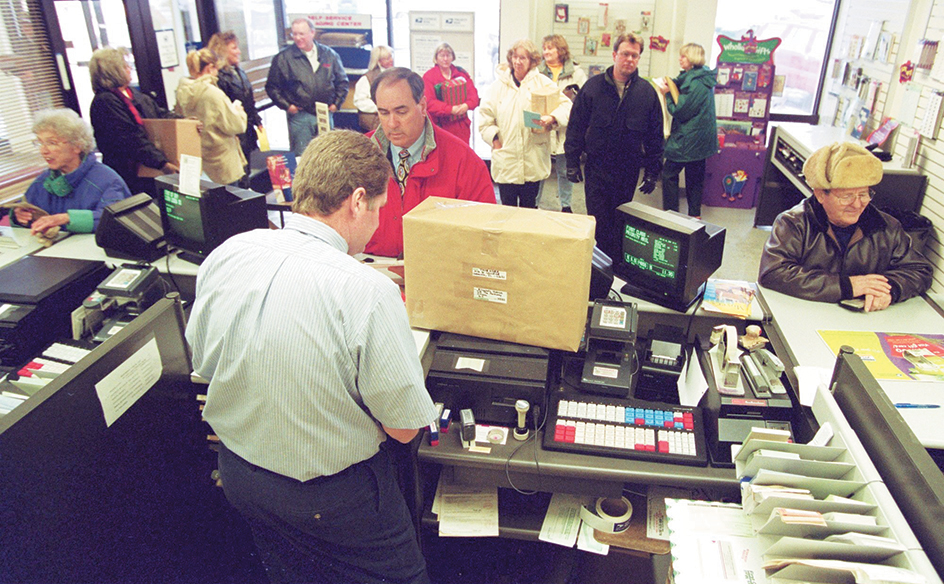
Mail is perhaps the one service of central government that touches nearly every citizen on almost a daily basis. Indeed, in many small towns, the post office is the only government building. By means of letters, people can share news and make plans with friends and relatives far away. Businesses send bills and receive payments through the mail. Most magazines and mail-order catalogs are delivered by mail.
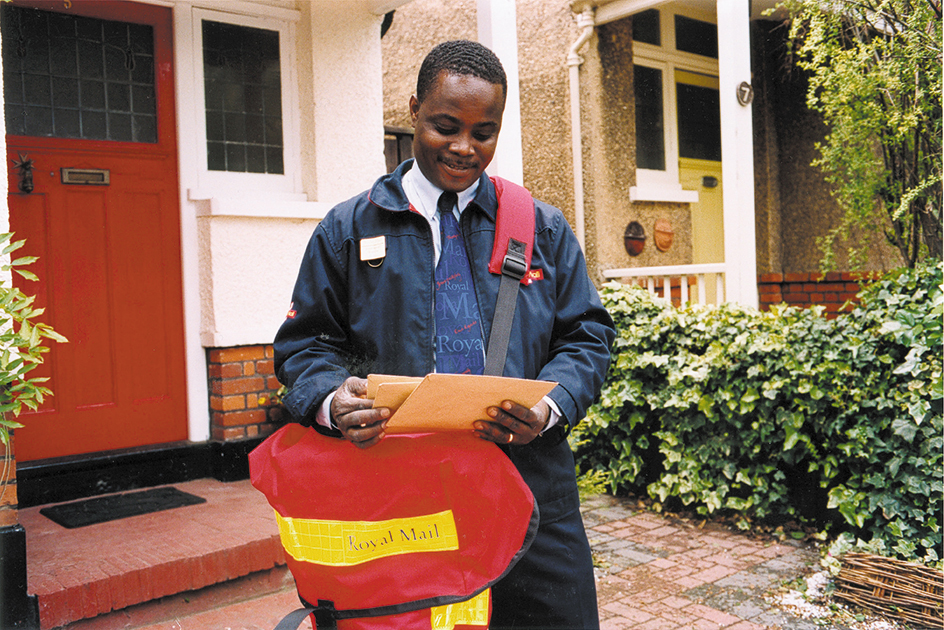
Postal services have played a major role in the building of nations and the uniting of people throughout history. In ancient times, an extensive system of messenger routes served to knit the Roman Empire together. In Australia, Canada, and the United States, the postal services helped promote democracy by uniting citizens who were scattered over a vast continent. Until well into the 1900’s, the postal services were the primary vehicle for communication and marketing.
The postal industry is big business. Postal agencies are large organizations, traditionally government-run, with many complicated managerial and economic concerns. The United States Postal Service, for example, is the country’s largest single employer of civilian labor, with about 900,000 full- and part-time employees. About 80 percent of the costs of postal administration consist of payrolls and other labor expenses.
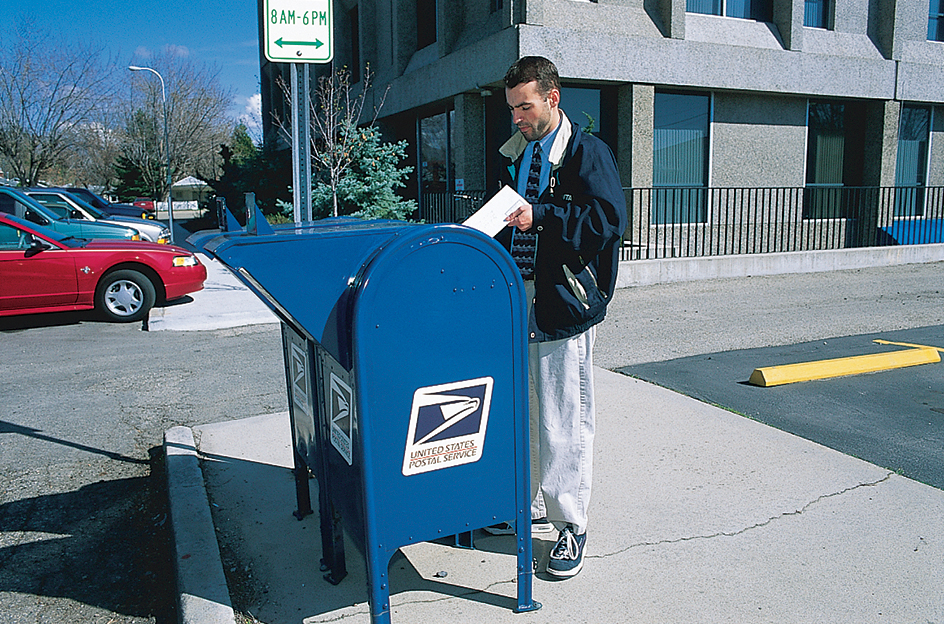
Mail service has long ranked as a vital public service, as well as a source of revenue for the government. Postal systems traditionally have an obligation of universal postal service—that is, a duty to deliver to every address in the country and to charge the same rate regardless of location and distance. Maintaining universal postal service would be difficult or impossible without government intervention. For this reason, most governments have provided national post offices with a legal monopoly, the right to be the only provider of certain types of mail service.
Although the post is an old and important institution, mail services worldwide have gone through great change. New electronic means of communication challenge the traditional role of mail for personal and business communication. In addition, the rise of private courier firms that provide shipping and delivery services has brought increased competition to the postal industry. The question of how to react to competition from new technologies and from private firms, while upholding the universal service obligation, is a vital one for mail service today.
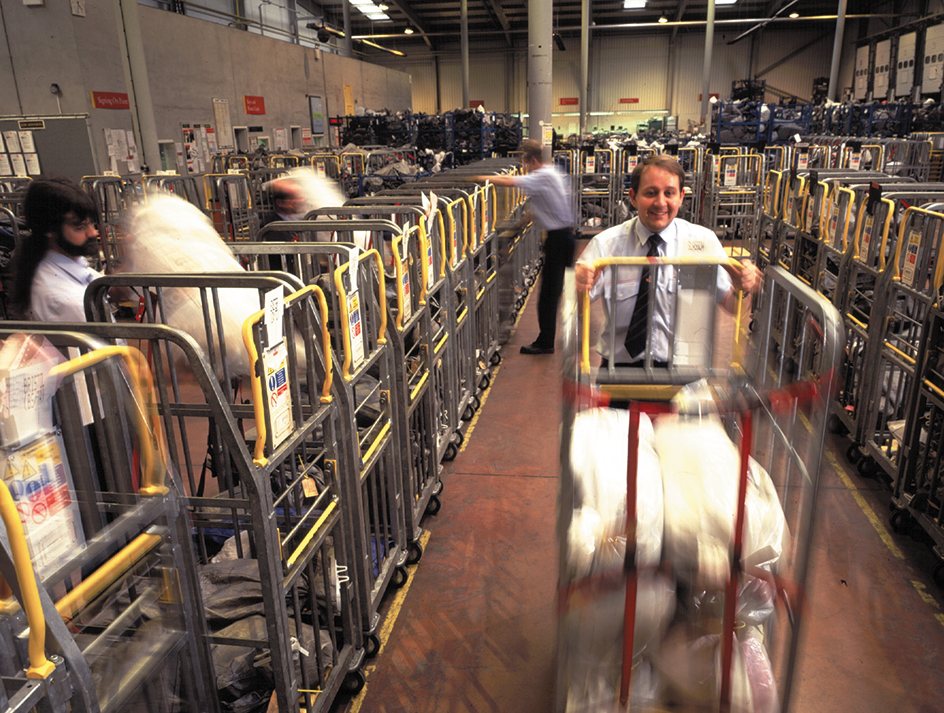
How mail is delivered
The sending of a letter or package is a long, complicated process. Many people and machines handle the mail before it reaches its destination. This section describes what happens to mail as it travels from the sender to the receiver.
Collection.
A person can mail a letter by taking it to a post office, by dropping it into a mailbox, or by handing it to a postal worker. Senders place postage stamps on letters as proof that they have paid the mailing charges in advance. Many towns and cities maintain mailboxes, also called collection boxes, along numerous streets. Many large office towers and apartment buildings also have mailboxes. Postal employees called letter carriers take the letters and packages from the mailboxes to a nearby post office.

Sorting.
Outgoing mail is first sorted at the originating post office, the postal facility near the sender. There, postal clerks put the newly collected mail into trays. They bundle packages separately. From the post office, the mail travels by truck to a central facility, sometimes called a management sectional center. These centers process nearly all the mail going from or coming to their regions.
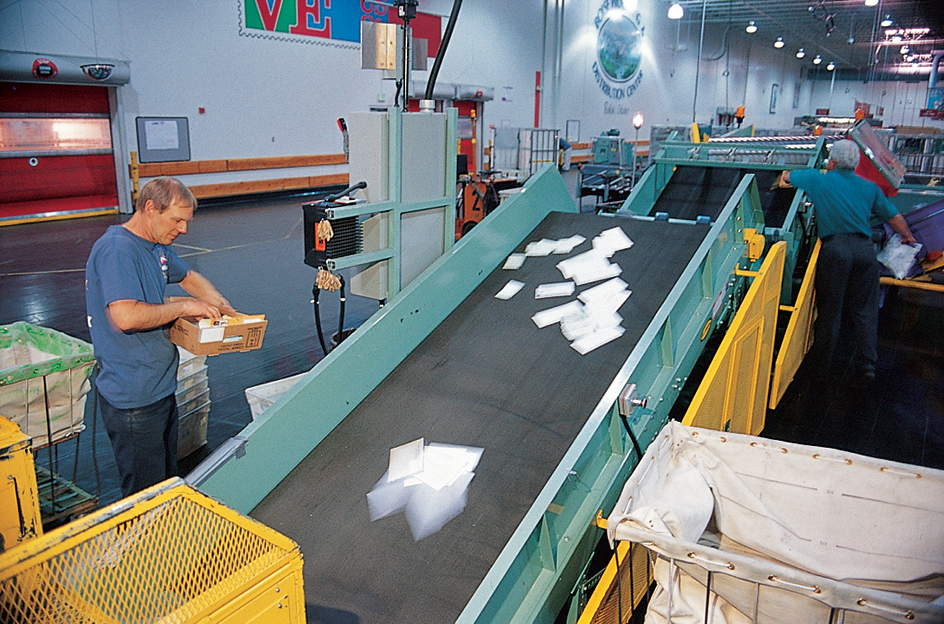
Workers called mail handlers empty the trays of mail onto moving conveyor belts. The belts carry the mail to a machine called an edger-feeder, which separates the mail according to envelope size. The edger-feeder moves the letters into another machine known as a facer-canceler. Sensing devices in the facer-canceler find the stamp or facer identification mark on the envelope. These sensors enable the machine to arrange the letters so they all face the same way. The facer-canceler cancels stamps by printing black lines over them so they cannot be used again.
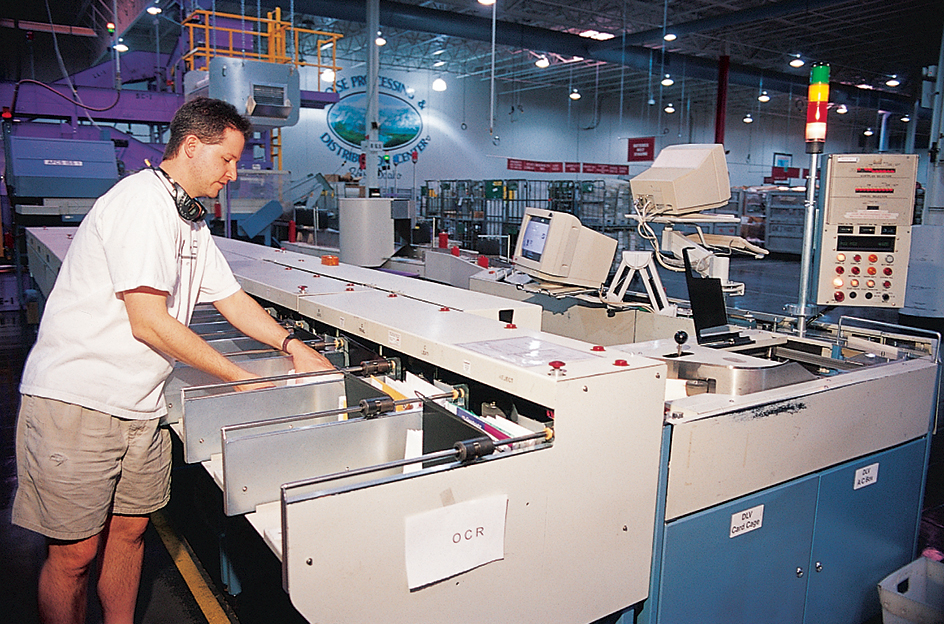
Mail then moves to computerized machines called optical character readers. These machines “read” the address on a letter and then spray a pattern of lines and bars known as a bar code onto the envelope. Machines called bar code sorters then read the codes and sort the mail according to region. Some businesses print their own bar codes on their outgoing mail; these precoded items skip the optical character readers and go directly to the bar code sorters.
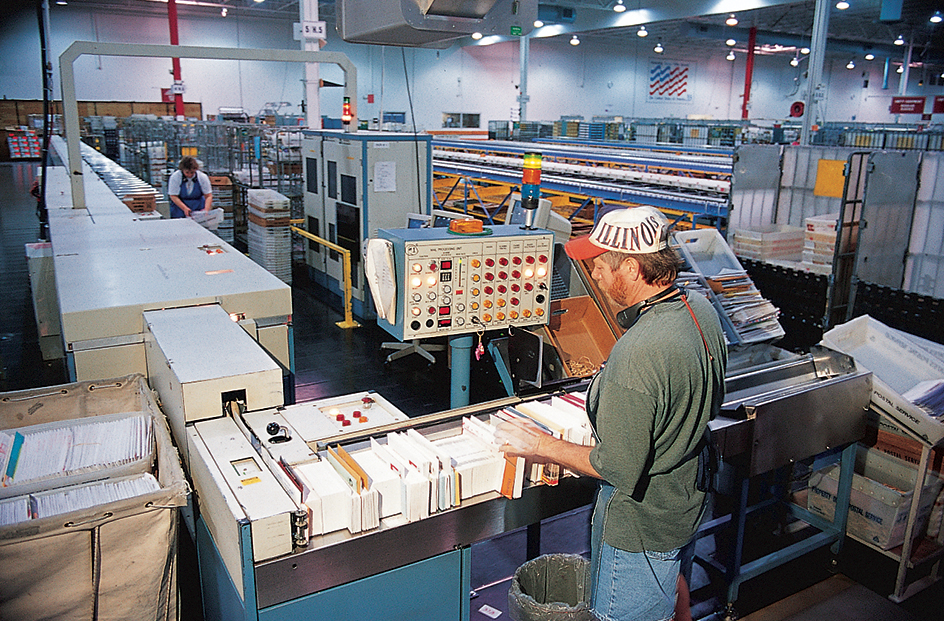
If an optical character reader cannot read the address on a piece of mail, the rejected mail may be sent for remote video encoding. In this process, an image of the address is scanned and stored in a computer, where computer programs and operators attempt to read the address. If the process succeeds, an operator codes the item and sends it to the bar code sorter. If the process does not succeed, the address is read by a person, and the mail is sorted accordingly.
Mail addressed to locations outside the region served by the central facility travels by truck, airplane, or train to other central facilities. The mail is then sorted mechanically or by hand into bundles for each delivery route served by the center. Finally, postal workers transport the mail to local post offices for delivery.
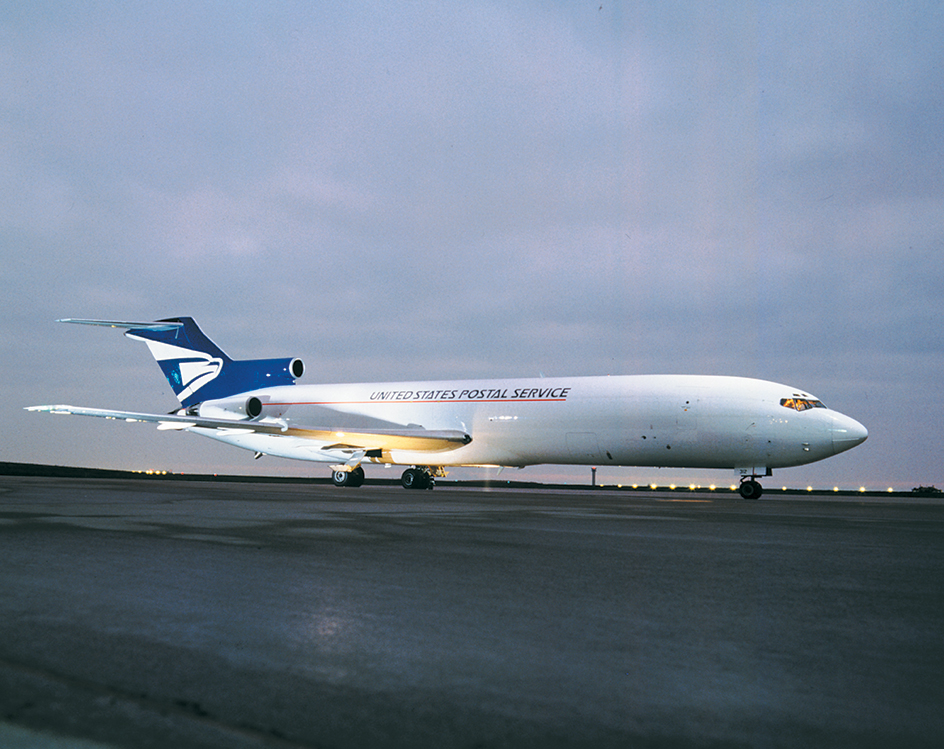
Delivery.
At local post offices, letter carriers receive the mail for businesses and homes along their routes. They arrange the mail in the order in which they will deliver it by putting it into cases that have slots for each address. In some areas, letter carriers receive mail that has already been sorted by a bar code sorter.
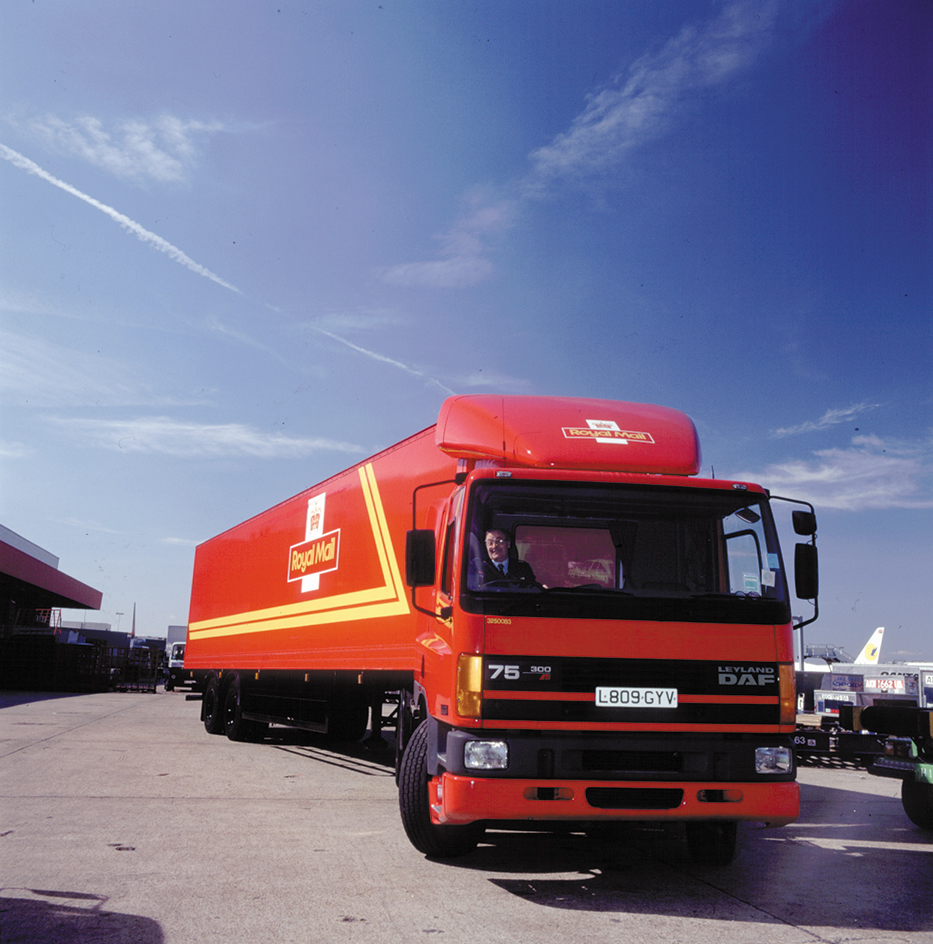
Some letter carriers walk their entire route. Most letter carriers, however, drive cars or special postal service vehicles.
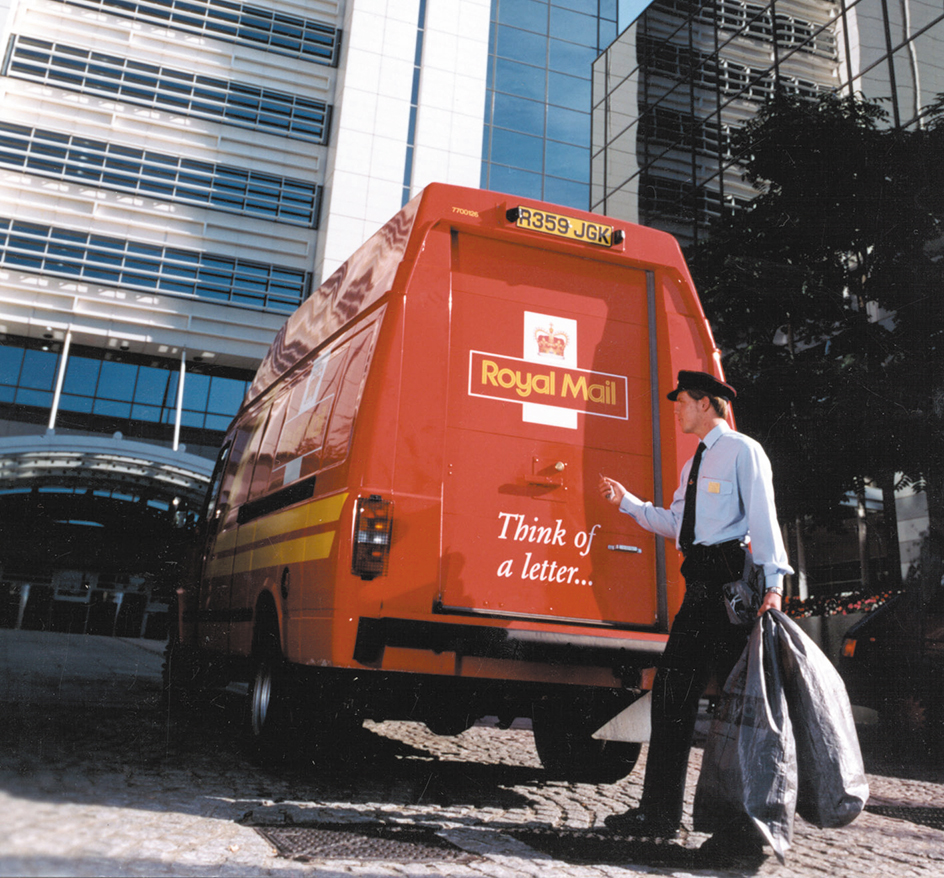
The history of postal services
Ancient times.
Many ancient civilizations, including the Chinese, Egyptians, Assyrians, and Persians, had well-organized mail systems. These early postal networks existed to help rulers govern empires that stretched over large areas. Generally, only government officials could use the postal system. There was little demand for public mail service because few people could read or write.
Nearly all ancient postal systems were relay systems. They consisted of runners or mounted couriers stationed at intervals along major roads. Messages relayed by these couriers traveled swiftly, sometimes more than 100 miles (160 kilometers) a day. In the 500’s B.C., the Persian Empire, based in what is now Iran, developed an efficient relay system of mail delivery by couriers on horseback. Herodotus, a Greek historian of the 400’s B.C., described the Persian messengers by writing, “Neither snow/ nor rain/ nor heat/ nor gloom of night stays these couriers from the swift completion of their appointed rounds.” These words are inscribed on the central post office building in New York City.
The most highly organized mail system of ancient times was established by Augustus Caesar, who became the Roman emperor in 27 B.C. It was a relay system in which mounted couriers rode throughout the empire on a network of well-constructed roads. Along the roads, the Romans built relay stations called posthouses. There, messengers could rest, get fresh horses, or pass their messages to another courier. In the A.D. 200’s, Roman couriers began to deliver a limited amount of private mail, as well as official messages.
The fall of the West Roman Empire in the A.D. 400’s led to the collapse of the postal system. Rulers in some areas continued to use Roman roads and posthouses for their own postal services. But generally, organized communication ended throughout Western Europe.
Meanwhile, many civilizations in other areas of the world developed efficient postal systems. In North and South America, the Aztec and the Inca established networks of relay runners, who delivered messages and packages between major cities. In Asia, the Mongol leader Kublai Khan developed a highly organized postal relay system, with more than 10,000 postal stations, during the 1200’s.
The growth of public mail systems.
During the 1300’s, the growth of international commerce led merchants and trading companies to establish their own courier services. Universities, religious groups, and guilds (organizations of skilled workers) also maintained mail service for their members. However, service was slow, expensive, and unreliable.
The invention of the printing press and the growth of education and learning during the 1400’s increased the demand for postal services. Delivering mail became a profitable business, and private mail services sprang up in many areas. The Thurn and Taxis family organized one of the most famous private systems in the Holy Roman Empire, which covered what are now Austria, the Czech Republic, Germany, the Netherlands, Switzerland, and part of Italy. Generally, however, service remained costly and slow. In addition, mail services only delivered mail along major transportation routes.
The rise of strong centralized governments in Europe in the late 1400’s and the 1500’s led to the establishment of official postal services. In 1477, King Louis XI of France created a postal system of mounted couriers with regular schedules. By the end of the 1400’s, the Thurn and Taxis family resurrected the old Roman postal system and began what would become a courier service connecting the monarchs of Europe. In the early 1500’s, King Henry VIII of England organized a courier system in his own country.
During the early 1600’s, many European governments established public postal systems. In 1627, the French government established post offices in major cities and regulated postal rates. Many countries passed laws giving the government the sole power to provide postal delivery. However, private mail services continued to operate in these countries, mostly along routes not covered by government postal systems.
The creation of the Penny Post.
The development of mail service in England soon surpassed that on the European continent. In 1635, King Charles I, motivated largely by the need to raise money, became the first English monarch to offer mail services to his subjects. In 1680, a merchant named William Dockwra organized the London Penny Post, which delivered mail anywhere in London for a penny. Dockwra introduced the practice of postmarking letters to indicate when and where they had been mailed. The London Penny Post became so successful that the government took control of the operation in 1682.
During the 1700’s, a program to improve the condition of public roads in England greatly increased the speed at which mail traveled. In the late 1700’s, the British government further improved postal service by sending mail on stagecoaches.
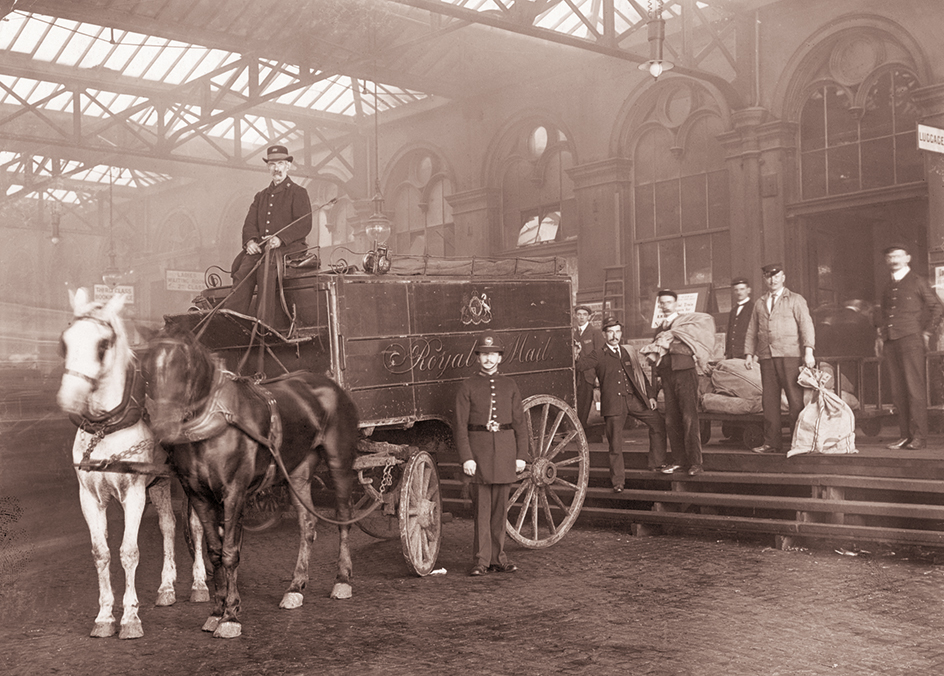
In 1837, a retired British schoolteacher named Rowland Hill wrote a pamphlet titled Post Office Reform. In it, he called for a uniform penny post, which would charge cheap, uniform postage rates, regardless of distance. At that time, the cost of sending a letter depended on how far it had to travel. Hill also proposed that postage should be paid in advance by the sender, with adhesive stamps to indicate payment. Previously, the letter carrier collected postage from the addressee unless postal officials had written “Paid” on the letter. In addition, Hill suggested the use of envelopes. Until that time, letters were merely folded and sealed with sealing wax. The British Post Office issued the first postage stamps in 1840 and later adopted many of Hill’s other ideas. Following the introduction of the uniform penny post, the British system became the model for postal systems around the world.
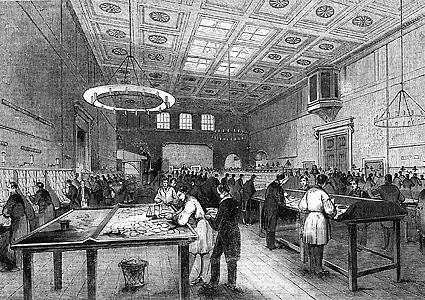
During the middle and late 1800’s, mail volumes increased dramatically. This expansion resulted in efforts to develop cooperation in postal communications between countries. In 1874, 22 countries attended an international postal conference in Bern, Switzerland, to organize and improve the flow of mail between nations. The conference established the General Postal Union, which began functioning in 1875. The name was later changed to the Universal Postal Union.
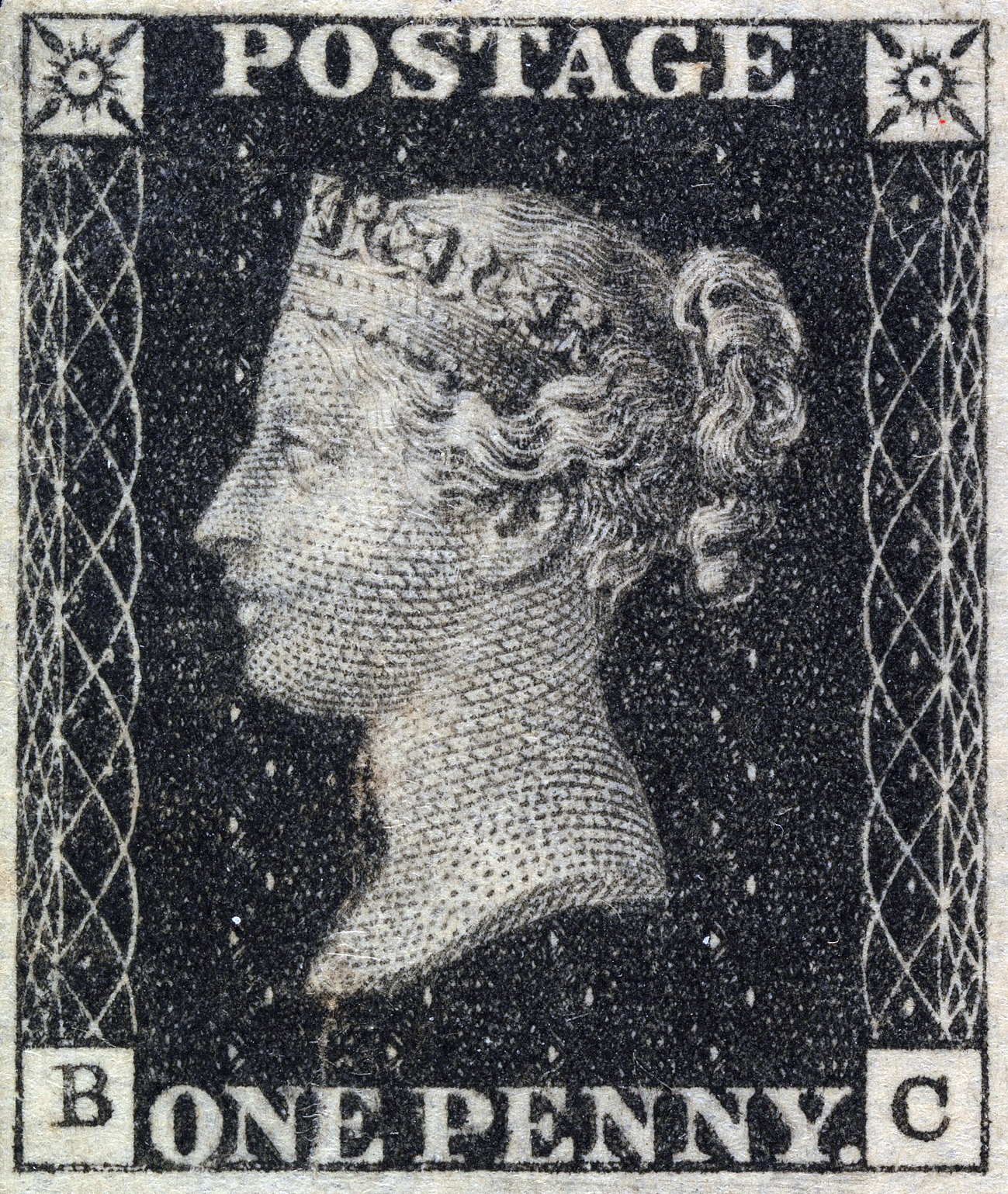
Postal service in the United States.
The first official postal system in the American Colonies was established in 1639 in Boston. The Massachusetts Bay Colony gave a tavern owner named Richard Fairbanks the right to process mail to and from overseas locations. In 1691, King William III of England gave Thomas Neale, a colonial official, the sole right to provide postal services in the American Colonies. In 1707, the British government took control of Neale’s system.
After the Revolutionary War in America began in 1775, the Continental Congress named statesman and inventor Benjamin Franklin the first postmaster general of the United States. In 1789, after the nation had won its independence, Congress gave the federal government the sole power to provide postal services.
During the 1800’s and early 1900’s, postal services grew rapidly in the United States. In 1863, the U.S. Post Office Department began to provide free delivery in many cities. In 1918, airplanes began to carry mail regularly. In 1943, the department divided major cities into numbered postal zones. In 1971, Congress replaced the Post Office Department with the United States Postal Service, an independent agency in the executive branch of the government. For more information on the U.S. Postal Service, see Postal Service, United States .
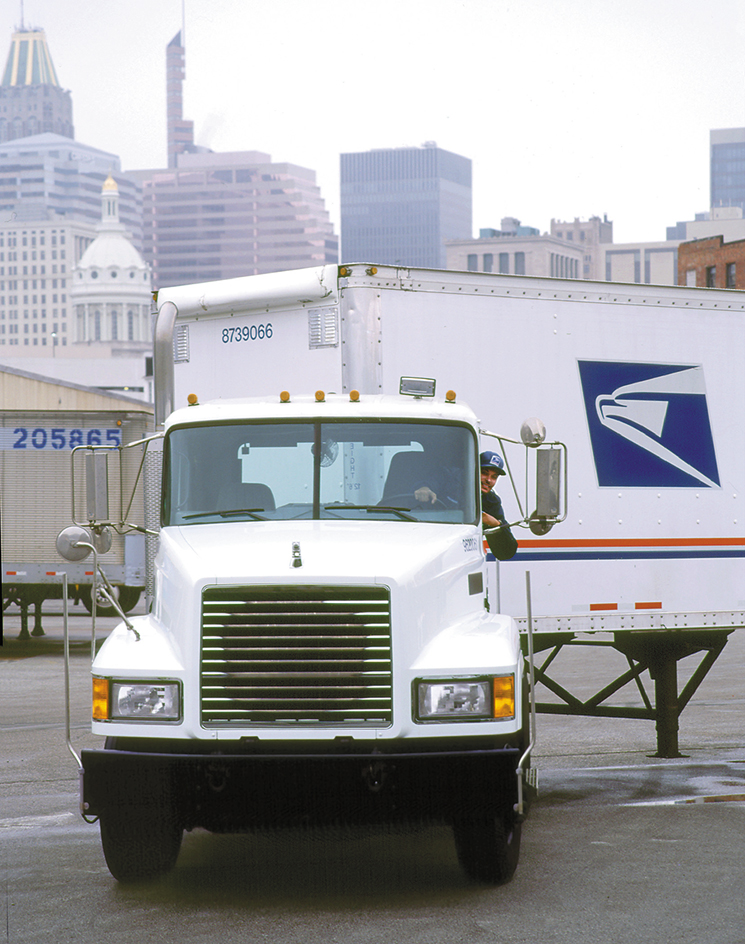
Canadian mail service.
The first organized postal service in Canada began in 1693, when Pedro da Silva transported letters between Montreal and Quebec City. At this time, most of Canada was controlled by either English or French colonists. In 1755, Canada’s first government post office opened, under the administration of the British Post Office.
Canada took over responsibility for its postal services in 1851, and it created the Post Office as a department of the Canadian government in 1868. Canada won complete independence from the United Kingdom in 1931. The Canada Post Corporation Act, passed in 1981, created the Canada Post Corporation to operate the mail system.
Modern developments
Postal services in their modern form have resulted from a long line of advances, both cultural and technological. The introduction of steamboats, trains, automobiles, airplanes, and new machinery have been vital to the industry’s growth since the 1800’s. Since the mid-1900’s, new developments have further improved the mail process in many ways, but they have also brought new challenges to the postal services.

Technological advancements.
In the 1960’s, many post offices began using high-speed equipment to perform much of the work previously done by hand. Since then, mail processing has gone through sustained technological innovation. The changes in technology in part stem from innovations in computers, telecommunications technology, and optical character reading.
A major application of these innovations has been the large-scale sorting of mail. Computerized machines, such as optical character readers and bar code sorters, enable post offices to quickly sort large amounts of mail with minimal costs. Many of these machines require fewer workers or little worker training, and some can be operated remotely.
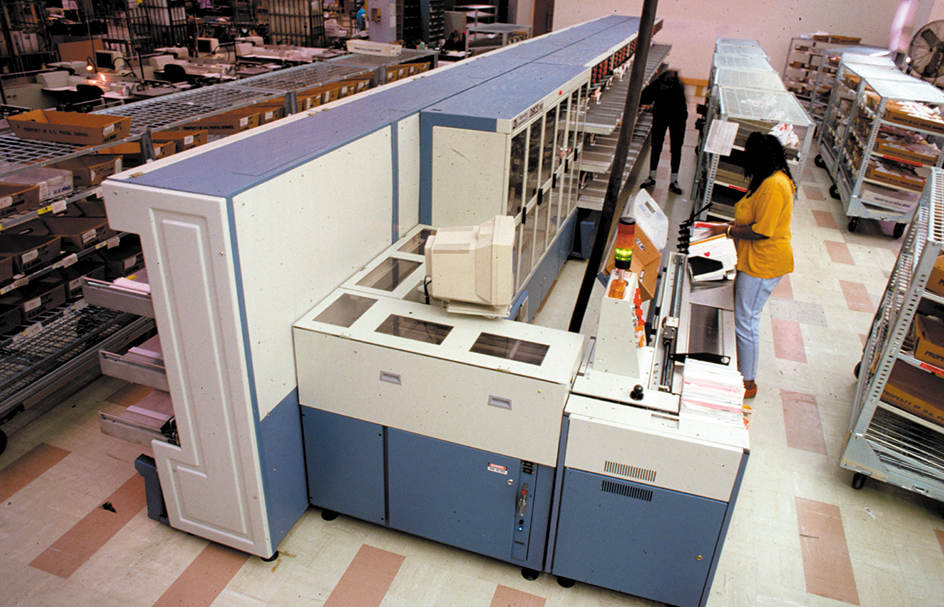
Throughout this period of technological advancement, postal services had to contend with alternative methods of communication. Such innovations as the telegraph, telephone, and fax machine offered new, fast ways to share information. But although phone calls and faxes reduced the use of mail for certain types of communication, the demand for mail remained strong.
A new type of competition emerged in the 1990’s, with the increased use of personal computers and the Internet. Computer users transmitted many messages that were once sent by mail by e-mail (electronic mail). In addition, many people began doing their shopping, banking, and business transactions over the Internet.
Competition from the Internet had a particularly large impact on traditional letter mail, known in the United States as First-Class Mail. This class of mail—used mainly for messages, invoices, and bills—is the class most easily replaced by electronic communication. The Internet also affected advertising mail, known in the United States as standard mail, as companies shifted some of their advertising to the World Wide Web. The demand for shipment of parcels (boxes and packages), on the other hand, grew with the rise of the Internet. This increased demand resulted, in part, because items purchased over the Internet still had to be shipped to the customer.
These changes have serious implications for the future funding of postal services and for the maintenance of universal service. If the demand for letter mail and advertising mail further decreases, as many experts expect, postal services worldwide may lose revenue and be forced to increase their rates and adjust their policies. Many postal systems, including the U.S. Postal Service, are themselves working to provide communication and bill payment by electronic means.
Competition and privatization.
In addition to coming to terms with technological innovations such as those described above, postal administrations face competition from private companies. For example, courier firms, such as United Parcel Service, Inc., have taken much of the parcel business away from the United States Postal Service. Postal services are limited in their ability to raise parcel rates, because parcel shipment is not subject to the same monopoly protection that covers letter mail.
In addition, some private firms offer presorting services in competition with traditional mail services. Presorting refers to any sorting of mail that occurs before the postal service handles it. In the United States, for example, a presorting company working for a newspaper or magazine may sort the mail and drop it off at the post office. Businesses find that they can afford presorting services, in part, because national post offices give a discount to mailers who presort their own mail.
Many people believe that mail delivery can function better as a competitive business than as a government monopoly. As a result, many countries have been privatizing their postal systems—that is, transferring certain operations and responsibilities from government agencies to privately owned companies. For instance, the Dutch Post Office is a private company with stock held both by the Netherlands government and by private individuals. Germany began to privatize its post office, Deutsche Post, in 2000. In other countries, a government postal administration may simply hire private firms to handle certain tasks.
